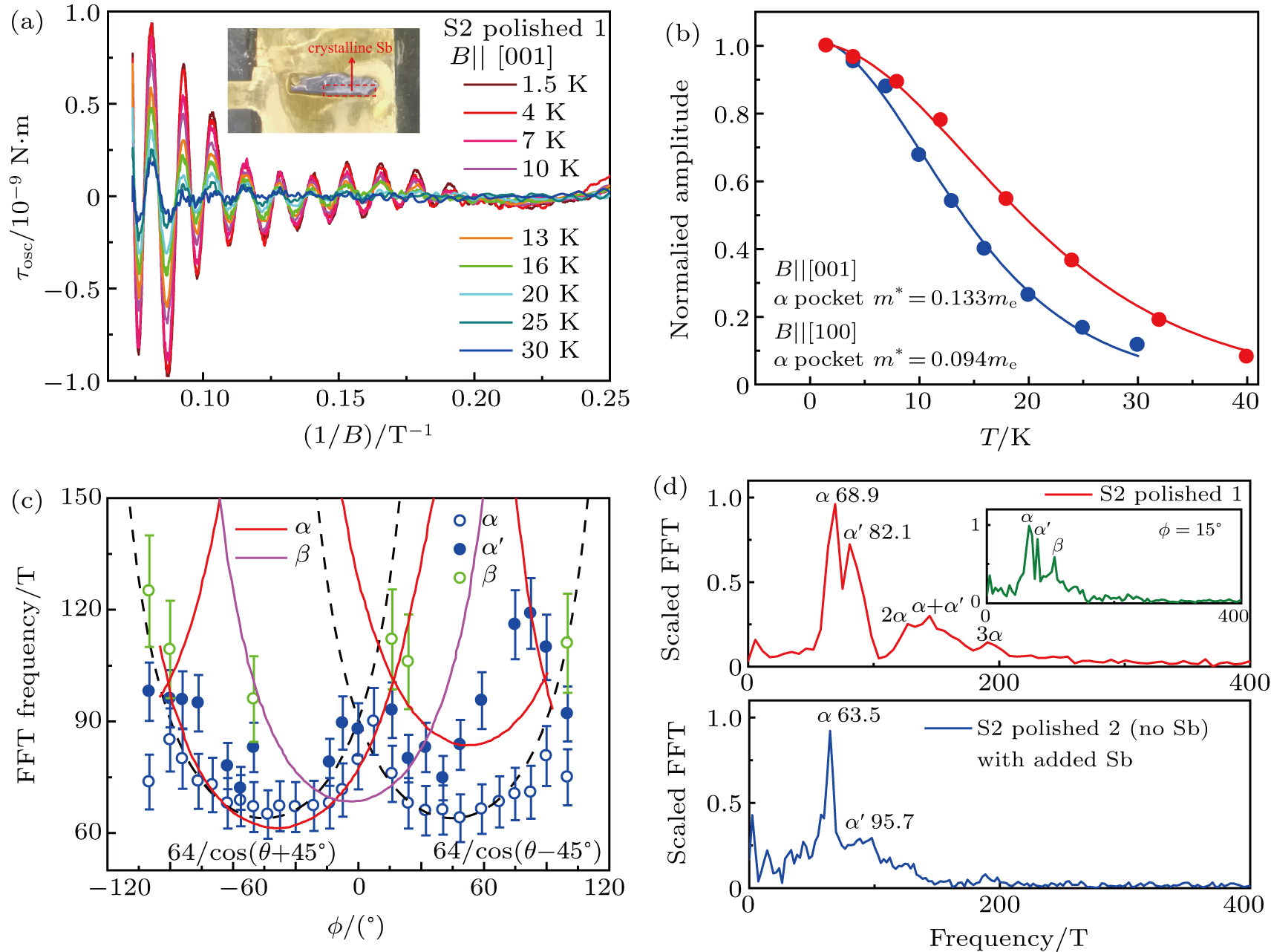Negative differential resistance and quantum oscillations in FeSb2 with embedded antimony
Project supported by Guangdong Innovative and Entrepreneurial Research Team Program, China (Grant No. 2016ZT06D348), the National Natural Science Foundation of China (Grant No. 11874193), and the Shenzhen Fundamental Subject Research Program, China (Grant Nos. JCYJ20170817110751776 and JCYJ20170307105434022). The work at Brookhaven is supported by the US Department of Energy, Office of Basic Energy Sciences as part of the Computational Material Science Program (material synthesis).
(a) Amplitudes of the dHvA oscillations at different temperatures after subtracting a polynomial background. (b) Theoretical analysis according to Lifshitz–Kosevich formulation of the dHvA amplitudes for α pocket with field applied along two different directions, which gives a cyclotron mass ∼ 0.1me. (c) Angular dependences [schematic diagram seen in Fig.
